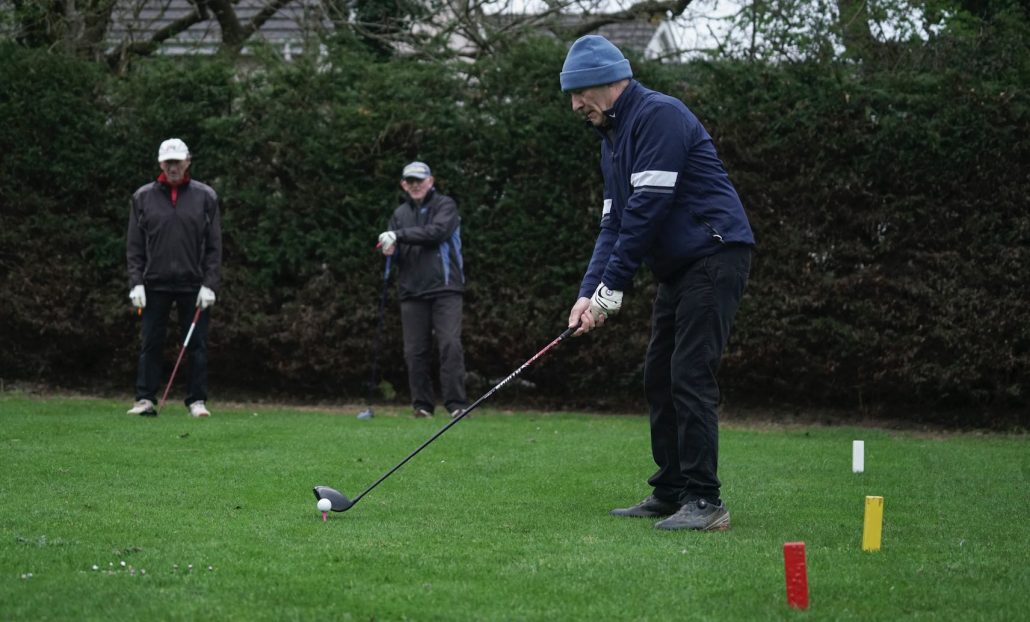Our fitness and wellbeing expert offers a few lessons to those whose bodies aren’t quite what they used to be.
When many golfers hit their fifties and sixties they resign themselves to the fact their golfing ability and performance is on the decline.
They have lost distance with every club in their bag, they are generating less clubhead speed and their swing feels stiff and restricted. These are all common areas of decline, observed in the ageing golfer’s game, but it’s never too late to improve with golf exercises.
These characteristics are to be expected when we consider the typical effects of ageing on our bodies and in particular, our muscles. Muscle wastage is especially prevalent in those who lead a sedentary lifestyle. Inactive people can have as much as a 50% decrease in muscle mass between the ages of 30 and 60. We also lose on average 30% of our body strength between 50 and 70 years of age.
Golf-performance decline through ageing is not caused only by muscle wastage, but also the breakdown of the kinetic chain. Age affects our whole body and how it functions from head to toe, including the mobility of joints, segmental stability, balance, speed and strength.
One area senior golfers can certainly improve is their mobility. I am fortunate enough to work with Sir Nick Faldo and we are constantly working on his mobility and flexibility. The loss of mobility in a joint may be the result of muscle tightness and inflexibility, but it invariably comes down to incorrect joint alignment due to poor posture.
Sir Nick has spent the past 15 years cooped up in a commentary booth so we focus a lot of his training on improving his posture through mobility work. Poor posture robs many joints of mobility which alters correct movement patterns. Muscles start to compensate, doing work they were not designed to do. This then leads to improper movement patterns, dysfunction and ultimately compensation, which can lead to pain and injuries.
A great example of this would be a reduction in hip mobility, which is a commonly degenerative joint in many golfers over 50. When the hip is restricted, it can lead to a weakening of the gluteal muscles as they are not correctly used. This often causes the lower-back muscles to compensate for the lack of glute use, which consequently leads to lower-back pain and stiffness. People complain of having a ‘bad back’ when in fact they have bad hip mobility. Such compensations will have major implications for the golf swing.
Pain aside, it can affect rotation on your backswing and downswing, which can result in a lateral sway or slide which will inevitably impact your ball striking, consistency and ball flight. Many golfers can benefit from a regular stretch session, so find yourself a golf fitness professional or biokineticist who can assess your movement capability and design a bespoke mobility programme for you.
One of the best ways to mitigate muscle wastage and maintain bone density as we age, is to engage in a strength training programme. It doesn’t have to be too extensive, but you must be sure to lift heavy stuff.
Functional movements are preferred over traditional bodybuilding, single-joint exercises that isolate specific muscle groups. For a strength training programme to be truly functional and have the desired, positive impact on your body, most of the exercises need to be done in an unsupported, three-dimensional environment that requires the brain to co-ordinate muscles into patterns of movement. Sounds complicated, but it’s actually pretty simple.
I select strength training exercises for all my clients, based on the following primal movement patterns or a combination thereof:
- Squatting
- Lunging
- Bending
- Pushing
- Pulling
- Twisting
- Gait (walk, jog, stride, run, sprint)
Many of my senior golfers complain about their loss of distance and this comes down to a lack of power. Strength training is important for building and maintaining the integrity of muscle tissue. It helps overcome the inevitable loss of fast-twitch fibres that have an impact on the muscle’s ability to generate the necessary force for specific tasks.
However, the ability to generate power is a central nervous system skill, as power is dependent on our ability to rapidly recruit and maximally contract muscle spindles. As such, this skill must be trained. Engaging in plyometric exercises such as medicine ball slams and explosive box jumps is a great way to maintain your power. Even just sprinting is a highly effective way to train for speed.
As Gary Player and Sir Nick continue to insist, you’re never too old to improve your game. Golf-specific exercises for seniors are designed to help you do that. Golfers are no longer being written off at 55 and are continuing to play at a good standard well into their sixties due to undertaking golf-specific fitness programmes that help them maintain their mobility, stability, balance and total-body function.
– This column first appeared in the January 2022 issue of Compleat Golfer magazine. Subscribe here!









